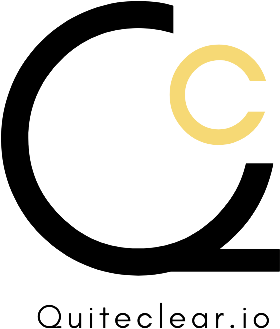White-Label vs Franchise Aligner Models: What’s Best for Your Dental Practice?

Clear aligners aren’t just transforming smiles. They’re transforming dental practices. With patient demand for discreet orthodontic solutions growing year after year, more dentists are looking beyond routine treatments and exploring aligner models as a new revenue stream. But here’s the catch: do you build your own aligner brand through a white-label model, or do you partner with an established franchise brand?
Both pathways promise growth, but the choice you make can determine whether your practice thrives as an independent brand builder or as part of a global aligner network. Let’s break down the pros, cons, costs, and patient-impact of each model, so you can decide what’s best for your clinic’s long-term vision.
What is a White-Label Aligner Model?
A white-label aligner model allows dental practices to offer clear aligners under their own brand name, while the manufacturing and treatment planning are handled by a third-party provider. In this setup, you get the aligners from a lab, use specialized software for treatment planning, and customize the branding to reflect your practice. This gives you the flexibility to market aligners as your own product, building credibility and loyalty directly with your patients.
Example: A dental clinic selling clear aligners under its own brand instead of promoting a larger company’s name.
What is a Franchise Aligner Model?
A franchise aligner model means partnering with a well-established aligner brand and becoming part of their network. The parent company provides standardized processes, treatment protocols, marketing materials, training, and patient support, reducing the burden on your practice. In return, you operate under their brand guidelines and often pay fees or royalties. This option is desirable for practices that want instant credibility and support without having to build a brand from scratch.
Example: Dentists offering Invisalign treatments as part of Align Technology’s global franchise network.
Advantages & Challenges of White-Label Models
Advantages of White Label Models
- Full Branding Freedom: With white-label aligners, your clinic’s name takes center stage. Every box, every aligner, and every touchpoint reflects your logo and brand story, helping you build long-term recognition and loyalty.
- Higher Margins in the Long Run: Since you’re not paying franchise or royalty fees, the profits stay with your practice. Over time, this translates into stronger margins and more financial independence.
- Customizable Treatment Plans & Flexibility: You can adapt workflows, treatment protocols, and software tools to suit your practice’s style. This flexibility is especially valuable for clinics that want to differentiate themselves with a more personalized patient approach.
- Control Over Pricing & Patient Experience: From setting treatment costs to tailoring customer service, everything remains under your control, allowing you to shape an experience that matches your practice’s vision.
Challenges of White Label Models
- Requires Investment in Marketing & Brand-Building: Since you’re creating your own aligner identity, you’ll need to invest time and money in marketing campaigns, patient education, and awareness-building to compete with recognizable franchise names.
- Responsibility for Logistics & Support: Unlike franchises that provide ready-made infrastructure, you’ll be in charge of managing logistics, after-care, and scaling operations as demand grows.
- Learning Curve with Software & Workflows: New digital tools and treatment planning platforms often come with a learning curve. Your staff may need additional training and adaptation time to operate efficiently.
Advantages & Challenges of Franchise Models
Advantages of Franchise Models
- Instant Brand Recognition & Credibility: Partnering with a well-known aligner brand gives your practice instant credibility. Patients are more likely to trust a name they’ve already heard of, which can shorten the decision-making process.
- Marketing, Training & Operational Support: Franchises often provide marketing campaigns, promotional assets, and comprehensive staff training. This support reduces the burden on your practice and ensures smoother day-to-day operations.
- Access to Established Protocols & Proven Software: You’ll gain access to tried-and-tested treatment planning systems, aligner technology, and patient care protocols. This helps maintain consistent quality and minimizes errors.
- Lower Initial Risk: For practices new to aligners, franchises offer a ready-made business model with reduced trial-and-error, helping you start faster and with fewer unknowns.
Challenges of Franchise Models
- Less Control Over Branding & Pricing: Since you operate under the parent company’s identity, your ability to differentiate your clinic is limited. Pricing is often dictated by the franchise, leaving little room for flexibility.
- Ongoing Fees: Royalty payments, licensing fees, or product markups can eat into your long-term profitability, even though they reduce initial risk.
- Limited Customization of Patient Experience: Protocols and guidelines are standardized across the network, which may restrict your ability to personalize treatment or adapt services to local patient preferences.
- Internal Competition: In some regions, multiple franchise clinics may operate within the same market, leading to direct competition among network members.
Which Model is Right for Your Practice?
Choosing between a white-label and a franchise aligner model depends less on the technology and more on your practice’s goals, resources, and growth strategy. Before leaping, reflect on a few key factors:
- Size & Maturity of Your Practice: Established practices with a loyal patient base may find white-label aligners a natural extension of their brand. Smaller or newer clinics might prefer the instant recognition that comes with a franchise.
- Budget & Marketing Resources: White-label models demand investment in marketing campaigns, awareness building, and patient education. If your practice has limited time or budget for promotion, a franchise’s built-in marketing support may be more practical.
- Long-Term Vision: Do you want to grow as an independent brand that patients associate with your name? White-label offers that freedom. Or do you prefer the stability and proven systems of an established global network? Then a franchise may be the right fit.
- Level of Operational Control: White-label models give you complete control over pricing, branding, and the patient journey. Franchise models streamline operations but come with stricter guidelines and less flexibility.
- Profits: Since you will have a higher control over pricing, you can price the aligners at a lower price than that compared to when using a franchise model and still make larger margins with each treatment.
- Freedom to chose Materials: When partnering with a white-label manufacturer like Quiteclear, you have the freedom to choose the aligner foil based on patient budget, case complexity and material performance based on experience.
Decision Framework
Choose White-Label if…
- You want to build your own brand identity in aligners.
- You’re ready to invest in marketing and patient education.
- You prefer long-term margin growth and operational independence.
Choose Franchise if…
- You want immediate credibility with patients.
- You value ready-made training, marketing, and support systems.
- You prefer lower initial risk and predictable processes.
Both white-label and franchise aligner models can open doors to growth and new revenue for your dental practice, but the right choice depends on your vision. If you’re driven to build your own brand, take control of pricing, and invest in long-term independence, the white-label model may be your best fit. If, instead, you value instant credibility, proven systems, and lower upfront risk, a franchise model offers a smoother path forward.
At the end of the day, it’s not about which model is “better” universally; it’s about which model aligns with your practice’s size, resources, and future goals. By carefully weighing the pros and cons, you’ll be able to choose a path that not only fits your clinic today but also supports the kind of growth you envision tomorrow.
